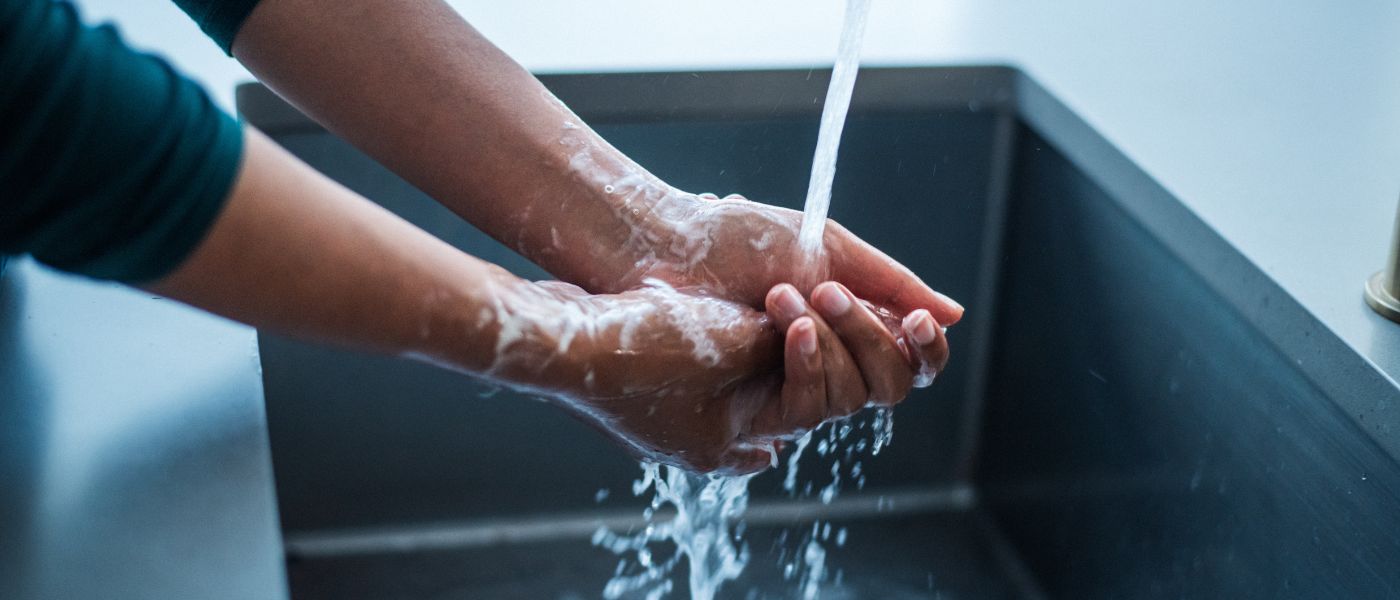When Shanina Knighton began pursuing her doctorate in nursing in 2013, she set out to seek evidence to support a theory. She’d noticed that, during the H1N1 pandemic, patient hand hygiene wasn’t prioritized the same way it was for healthcare providers.

Her take? Prioritizing this practice among patients as well would keep germs at bay and prevent disease spread in hospital settings.
Knighton decided she would give herself four years to study her theory and, if it didn’t pan out, she would let it go.
She didn’t have to. Her research demonstrated patients carry pathogens on their hands and thus a greater need for patients to be able to self-manage hand hygiene during inpatient stays. Ever since, Knighton, now an adjunct associate professor at Frances Payne Bolton School of Nursing, worked to understand barriers patients face and uncover new methods to promote better hygiene practices, recently pivoting to technological solutions.
Her research came center stage in 2020 when another pandemic, COVID-19, overwhelmed healthcare systems worldwide and reinforced the need for better patient hand hygiene practices and policies.
In recognition of World Hand Hygiene Day (May 5), we spoke with Knighton to learn more about reminders and takeaways from the COVID-19 pandemic when it comes to cleaning your hands. Read on to learn Knighton’s thoughts.
Answers have been lightly edited for clarity and length.
1. When in doubt, go back to the basics.
We focus sometimes so much on the big things that we forget the simple things. Hand hygiene is known to be the cheapest, safest and most effective way to prevent the spread of germs that can lead to infections. We know we should clean our hands for 25 to 30 seconds, and it’s recommended that commonly used songs such as “Happy Birthday” are used to mark the time.
People should clean the front and back of their hands, the webs of their hands. They should scrub their fingers, clean thoroughly up under jewelry, and clean their wrists.
What I find ironic [following COVID-19], is I do not see an improvement in hand hygiene behavior because, unfortunately, so much emphasis was put on vaccines and masks that we still forgot that even with those protective measures, germs still can be transmitted by way of hands.
2. Remember germs are everywhere.
[Even during a pandemic], we’re still going to need to all touch the same elevator buttons. We’re going to touch the same escalators, we may hold on to the same rails, and there are too many commonly touched items that connect us all, even when opening up a door.
When we have a better understanding of that, we become more mindful of the important times when we should be cleaning our hands instead of just the act of cleaning our hands.
3. Don’t forget to dry your hands.
As much emphasis as we place on washing, there should also be a heavy emphasis on drying. Wet hands have the ability to pick up bacteria [that lead to] viruses and fungus, so drying is a crucial part of hand washing.
Drying your hands helps ensure the same hands that you just cleaned are not picking up more harmful germs, or are at least less likely to pick up more harmful germs than if the hands were still wet or damp.
4. Hand hygiene isn’t always equitable.
COVID-19 showed us that we’re more connected than we are separated, and that when we are talking about hospital care, we also have to be talking about community care and what those resources look like.
It also taught us that hand hygiene may not necessarily always be equitable, meaning that we saw times when there were shortages of hand sanitizer and people had to make it. There were shortages of soaps, and people had to either make them or learn to clean their hands without these materials.
So I think it also taught us to think through infection, prevention and control in an equitable way without making the assumption that everyone has access to proper materials to clean their hands.
5. Hand hygiene can be taken on the go.
There are options for taking hand hygiene with you, but there are factors to keep in mind. Don’t leave hand sanitizer in a hot car because it’s combustible—believe it or not. And, unfortunately, if it’s not at room temperature, then there’s no guarantee that you’re going to get the efficacy of the hand sanitizer. You should also be mindful that hand sanitizers do have expiration dates.
I actually am focusing a lot more in recent days on public health work and am even looking at overlooked germs such as steering wheels in cars. So many people get in the car and then eat different foods. They’re coming from public environments, and they’re bringing the public right into what I call the “second home.” I describe our cars to be our second home because it’s what gets us from point A to Point B, and so we essentially contaminate our second home.
So steering wheels can contain a lot of germs. And unfortunately, a lot of people end up sick because they don’t think about the connection between touching their steering wheel and simultaneously trying to eat on the go.


